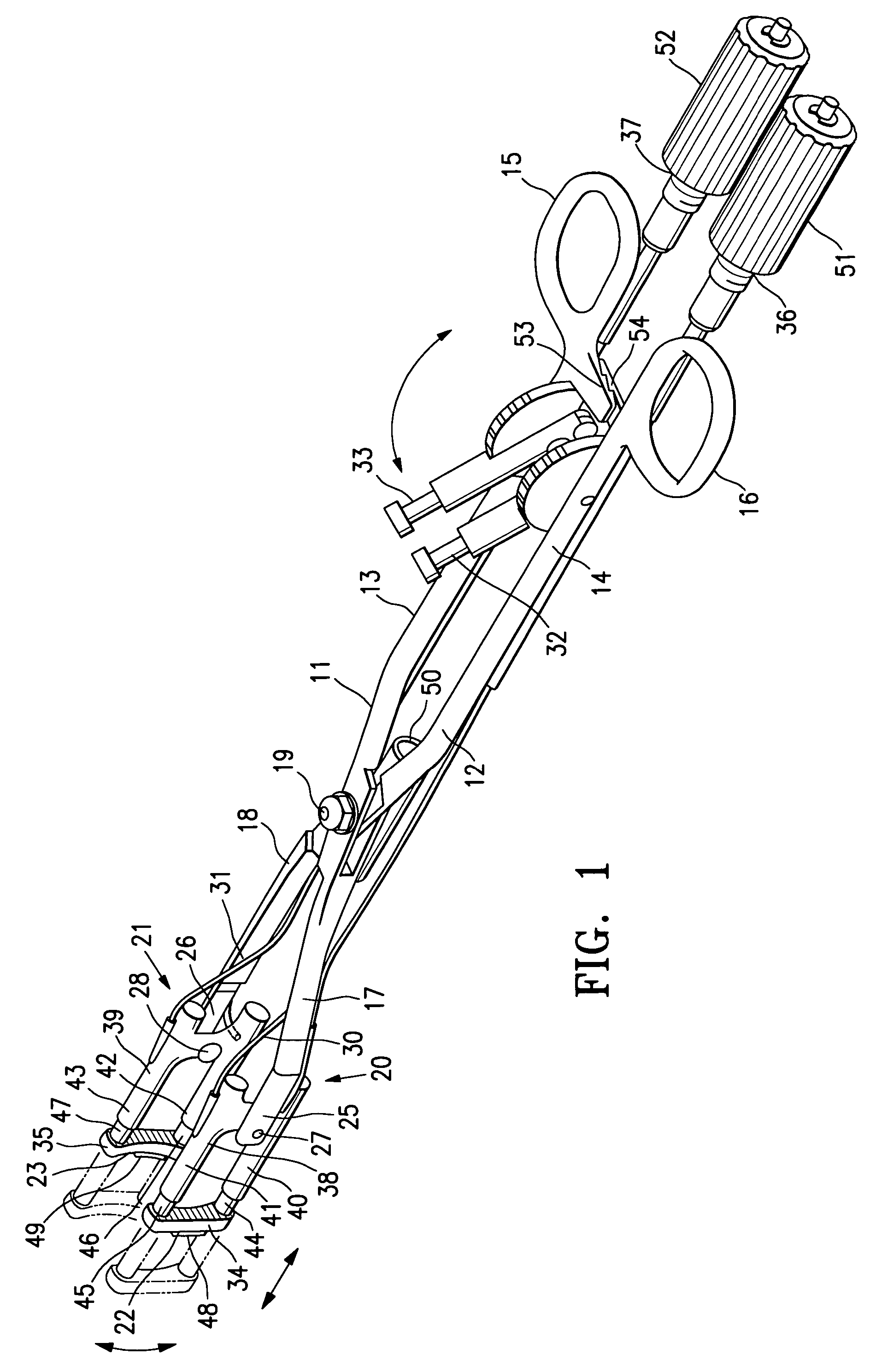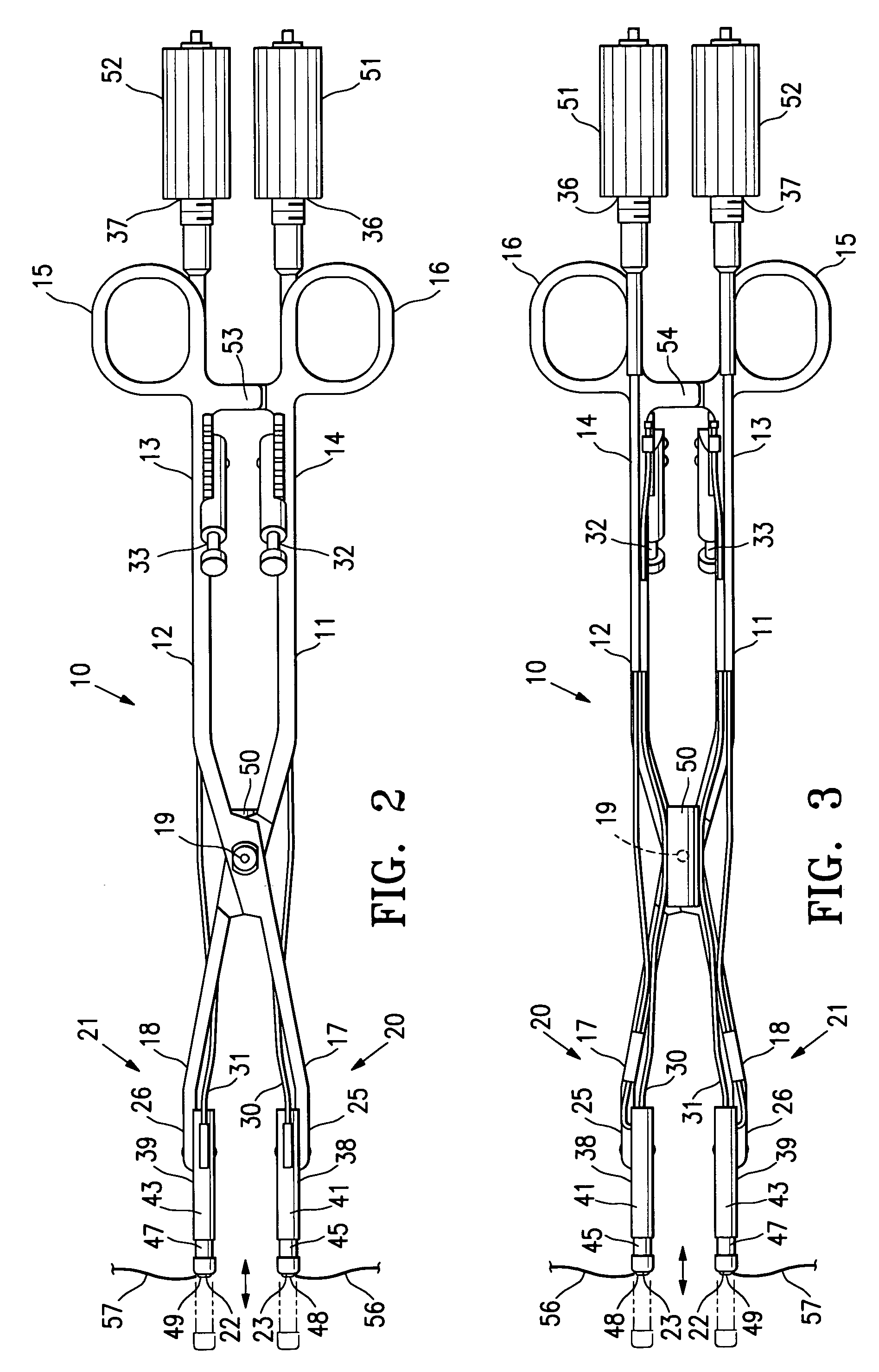Occlusion device for asymmetrical uterine artery anatomy
a uterine artery and occlusion device technology, applied in the field of uterine disorders, can solve the problems of difficult use, known risks and disadvantages, and drastic treatment of hysterectomy, and achieve the effect of reducing distance and facilitating effective pressure application
- Summary
- Abstract
- Description
- Claims
- Application Information
AI Technical Summary
Benefits of technology
Problems solved by technology
Method used
Image
Examples
Embodiment Construction
[0034]FIGS. 1-6 illustrate a relatively non-invasive intra-vaginal occluding device 10 embodying features of the invention. The device 10 includes a pair of elongated occluding members 11 and 12, each of which has a proximal shaft section 13 and 14 respectively with finger grips 15 and 16, and distal shaft sections 17 and 18 with occluding elements 20 and 21 having pressure-applying surfaces 22 and 23 respectively. The elongated occluding members 11 and 12 are pivotally connected at pivot point 19.
[0035]The occluding elements 20 and 21 on the distal portion of the distal shaft sections 17 and 18 are shown pivotally mounted to the distal ends 25 and 26 of the distal shaft sections 17 and 18 respectively at pivots 27 and 28. The occluding elements 20 and 21 are rotated about the pivotal connections 27 and 28 by control cables 30 and 31 which are connected to control arms 32 and 33 respectively mounted on the proximal shaft sections 14 and 13. The control arms 32 and 33 are provided wi...
PUM
 Login to view more
Login to view more Abstract
Description
Claims
Application Information
 Login to view more
Login to view more - R&D Engineer
- R&D Manager
- IP Professional
- Industry Leading Data Capabilities
- Powerful AI technology
- Patent DNA Extraction
Browse by: Latest US Patents, China's latest patents, Technical Efficacy Thesaurus, Application Domain, Technology Topic.
© 2024 PatSnap. All rights reserved.Legal|Privacy policy|Modern Slavery Act Transparency Statement|Sitemap



